Escabeche de Pollo is a classic Spanish dish of tangy and rich chicken braised in a combination of olive oil, vinegar, and wine with aromatics for a deeply flavorful, make-ahead-friendly meal.
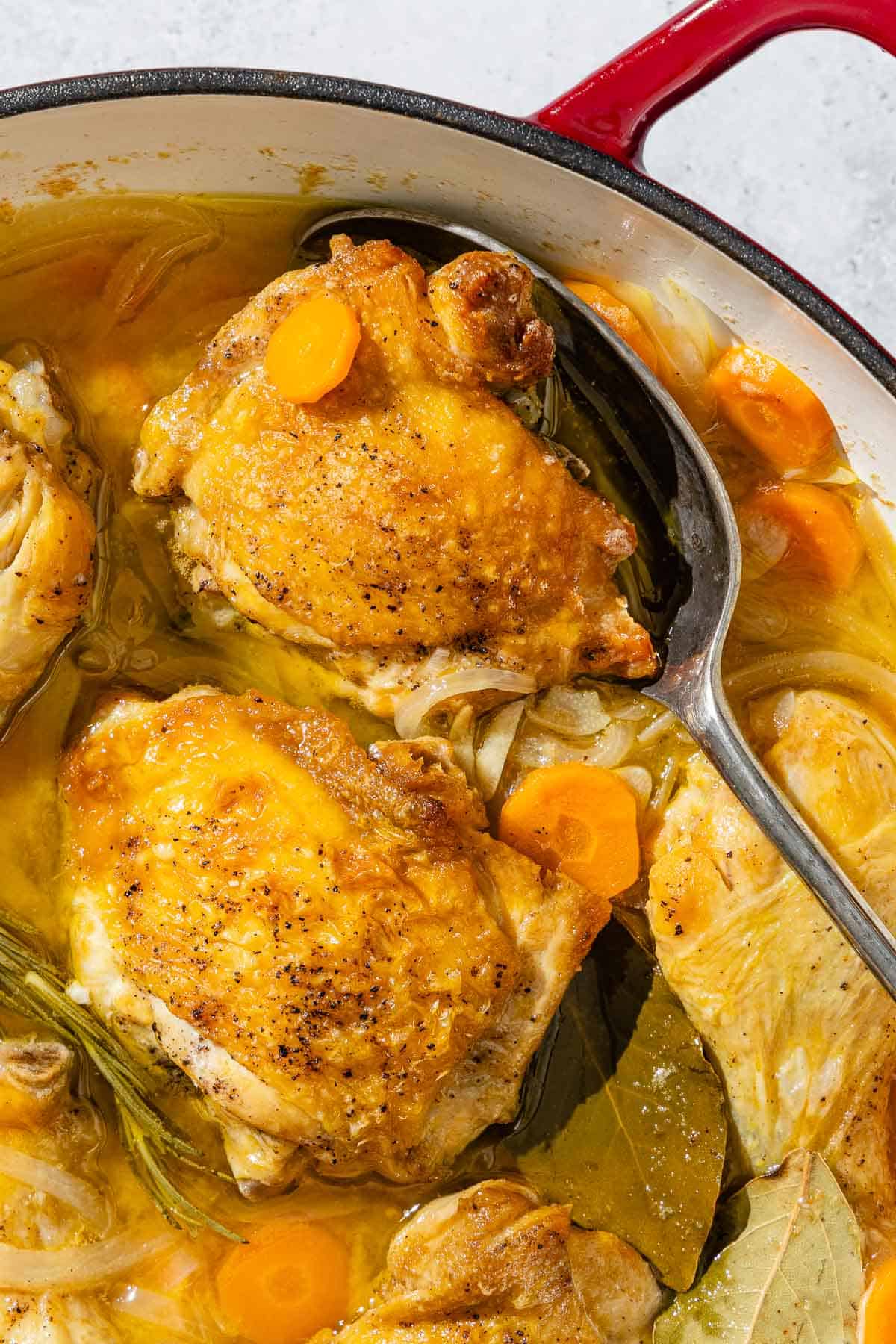
I love a no-fuss meal that I can make ahead of time, especially if it tastes even better the next day. Pollo en escabeche is a centuries-old Spanish dish of chicken cooked in vinegar sauce. While the sharp vinegar sauce was initially used to help preserve food for longer, modern recipes like this one balance the tang and richness without entirely sacrificing its bright, punchy flavor.
Aromatic herbs and vegetables braise alongside the chicken to create a tart, savory sauce, creating a remarkably flavorful meal. While you can serve it hot from the pan with some crusty bread or over a bed of rice, I prefer to cool it and serve it for an easy lunch the next day, after the flavors have had time to mingle.
After a night in the fridge, the sharp vinegar mellows, the herbaceous flavor deepens, and the whole dish takes on a complexity you’d never expect from such simple ingredients.
Table of Contents
What is Escabeche?
Escabeche is a method of cooking meat, seafood, or vegetables in a vinegar sauce that dates back centuries. According to author and historian Harold McGee in On Food and Cooking, modern escabeche derives from the Arabic sikbaj, which was introduced to the Iberian Peninsula in medieval Al-Andalus.
Cooking and storing food in vinegar helped to preserve it before the advent of modern refrigeration. The acid in the sauce had the added benefit of making chicken more tender by denaturing the collagen and proteins in the meat.
Old recipes required much more vinegar and were diluted upon serving. With refrigeration, we don’t need as much vinegar, so we can make a more balanced dish. The most common ratio nowadays is two parts olive oil, one part vinegar, and one part wine. I usually cut down on the oil to equal parts olive oil, vinegar, and wine. While it’s sharper than the traditional ratio, it won’t make you pucker, especially after mellowing out in the fridge overnight.
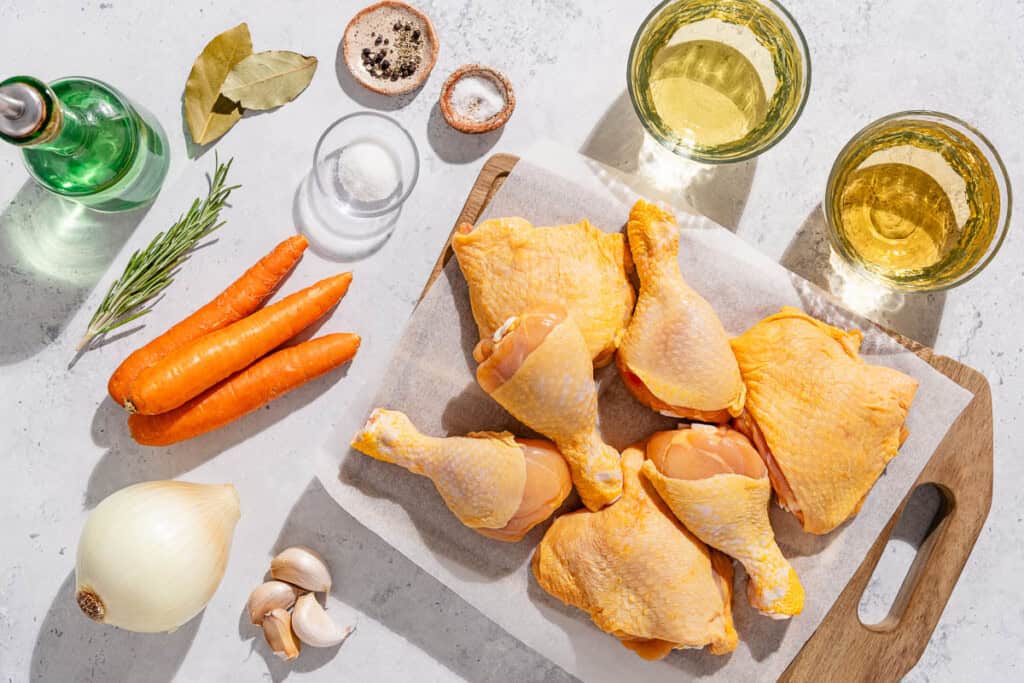
Ingredients for Pollo en Escabeche
Chicken escabeche coaxes maximum flavor out of humble ingredients, most of which you likely already have in your pantry. Here is everything you’ll need:
- Extra virgin olive oil: Olive oil adds richness and rounds out the acidity from the vinegar and wine. Hojiblanca has a fruity flavor that complements the flavors of the white wine vinegar.
- Chicken thighs and drumsticks: Traditionally, cooks would use a whole chicken broken down into eight pieces. I find that the chicken breasts tend to dry out before the dark meat becomes tender, so I prefer a mix of bone-in thighs and drumsticks for consistently tender chicken. You can use skin-on chicken pieces or remove the skin.
- Onion: Use a Spanish or yellow onion for its sweet and mild flavor.
- Carrots: Although carrots aren’t always included, I appreciate the sweetness they add to the sharp sauce.
- Garlic: Sweet and savory garlic infuses the chicken and escabeche with depth of flavor.
- White wine vinegar: Use a vinegar with a smooth and bright flavor. You can substitute it with apple cider vinegar, but avoid stronger kinds of vinegar, like distilled white vinegar.
- White wine: Use an unoaked, crisp white wine. Spanish Verdejo wine has a bright, citrusy flavor. Sauvignon Blanc is a good alternative. If you avoid alcohol, substitute it with chicken stock.
- Rosemary: A sprig of fresh rosemary adds herbaceous flavor without overwhelming the chicken. I also like to substitute other fresh herbs, such as thyme, oregano, or sage, depending on what I have around.
- Bay leaves: A couple of bay leaves add an earthy, floral flavor and a subtle complexity.
- Sugar: A bit of sugar helps to balance the sharpness of the vinegar.
- Kosher salt and black pepper: Enhance the other flavors in the dish
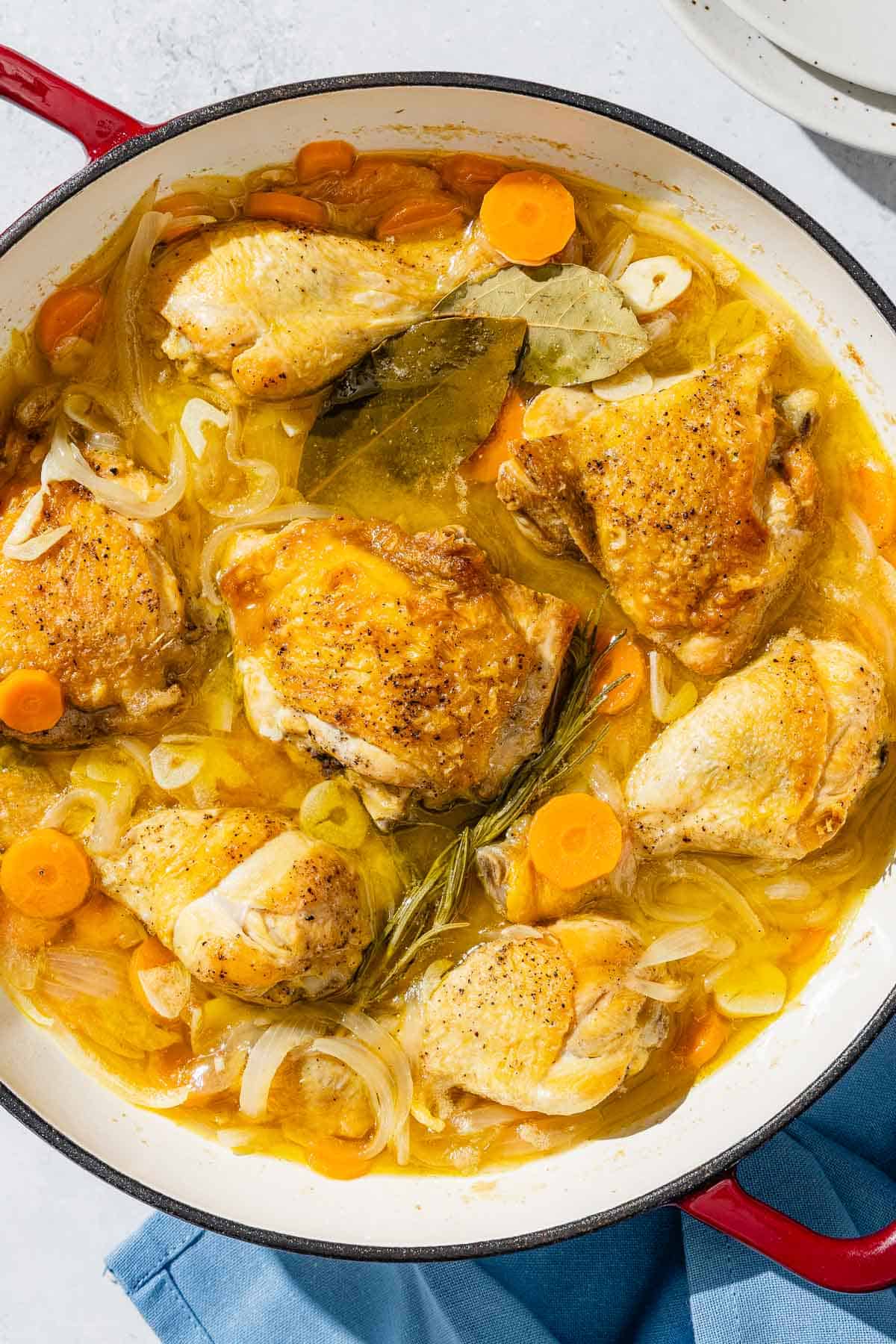
How to Make Pollo en Escabeche
This one-pan chicken escabeche comes together in just about an hour. Simply brown the chicken, cook the vegetables, and then braise everything in the olive oil and vinegar sauce.
- Season and brown the chicken: Season 2 lbs (910g) bone-in, skin-on chicken thighs and drumsticks all over with salt and pepper. Heat about 1/4 cup olive oil in a large skillet over medium-high heat. Brown the chicken on both sides, about 3 to 4 minutes per side. Transfer to a plate and set aside. The chicken won’t be fully cooked at this time, but will finish cooking in the sauce later.
- Cook the vegetables: Reduce the heat to medium. Add about another 3/4 cup olive oil,1 thinly sliced onion, and 3 carrots sliced into 1/4-inch rounds to the pan. Cook, stirring occasionally, until the onions are translucent, about 8 minutes. Add 4 cloves of thinly sliced garlic and cook until fragrant, about 1 minute.
- Braise the chicken: Add 1 cup white wine vinegar, 1 cup dry white wine, and 1 teaspoon sugar. Use a wooden spoon to loosen any browned bits stuck to the bottom of the pan, incorporating them into the liquid. Return the chicken to the pan along with any juices on the plate. Add a sprig of fresh rosemary and 2 bay leaves. Bring the sauce to a boil, then reduce the heat to low to maintain a gentle simmer. Cook, covered with the lid slightly ajar, until the chicken is tender, 30 to 35 minutes. Chicken thighs and drumsticks are most tender when the internal temperature registers between 190°F and 195°F on an instant-read thermometer.
- Serve: Serve right away, or let it marinate overnight. Let the escabeche cool to room temperature. Transfer the chicken to a container, ensuring it is submerged in the sauce. Store in the refrigerator overnight. Serve cold or hot. The escabeche sauce may gel in the fridge. You can heat it in the microwave to make it liquid again.
Make it Your Own
You can easily adapt escabeche to incorporate new flavors or to cook your preferred cut of chicken. Here are some ideas for adapting it.
- Use boneless, skinless chicken. You can use this escabeche method to cook any cut of chicken by varying the cooking time. If using boneless chicken thighs or breasts, start checking for doneness after 15 minutes. Chicken breast should register 165°F on an instant-read thermometer when fully cooked.
- Instead of wine, try it with dry hard cider. In northern Spain, they often cook with hard cider instead of wine. Substitute apple cider vinegar for the white wine vinegar and a dry hard cider for the wine.
- Add Spanish paprika. To add sweet smokiness, add a teaspoon of smoked Spanish paprika at the same time as the garlic.
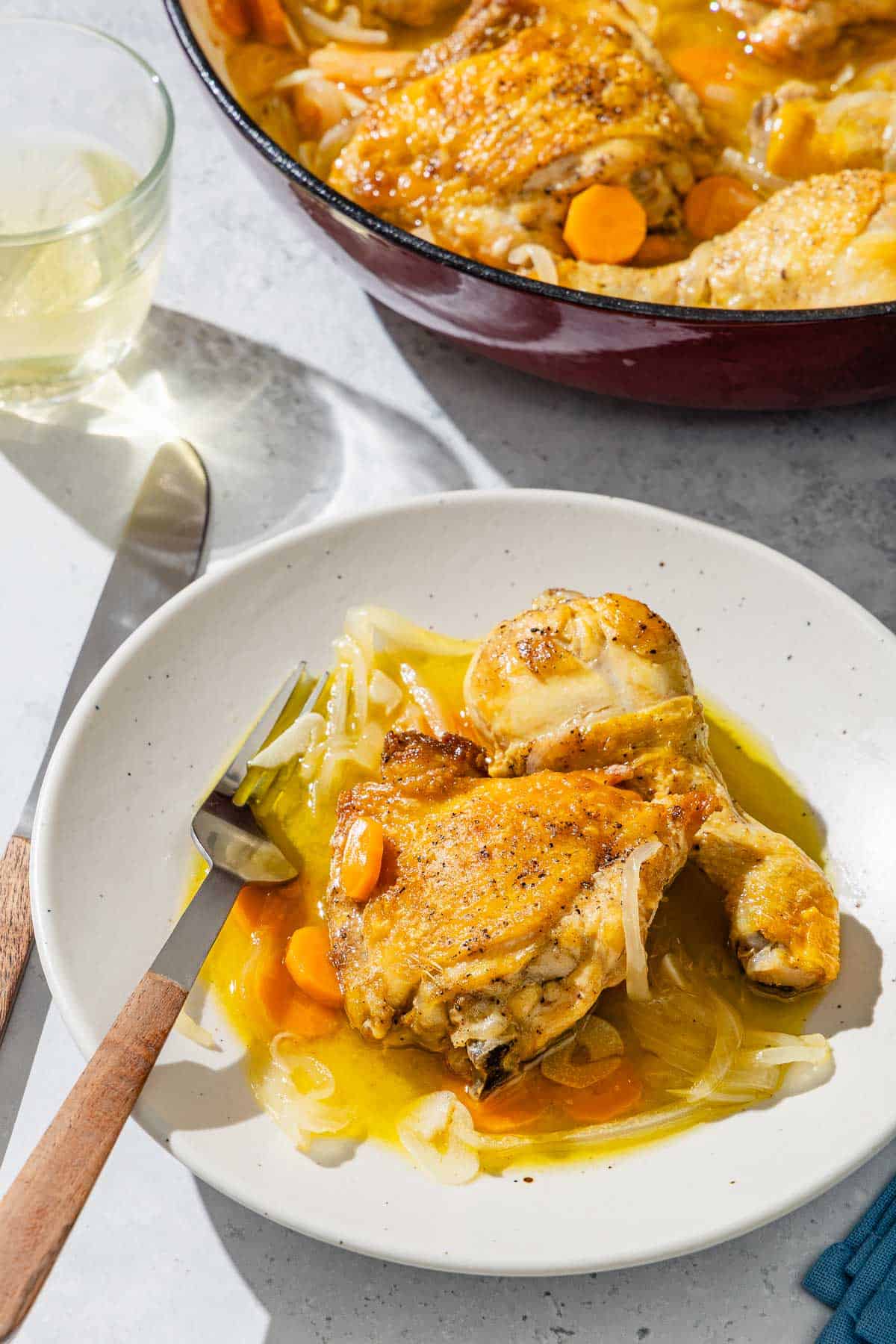
What to Serve with Pollo en Escabeche
Chicken escabeche can be served hot, but it’s often served cold the next day after marinating in the refrigerator overnight.
In the summer, I enjoy it cold for lunch. Remove the meat from the bones and use it to top a salad, like this simple lettuce salad or this summery cucumber and radish salad. The escabeche sauce makes a flavorful salad dressing. The time resting in the fridge infuses the chicken with more flavor while also taming the harshness of the vinegar. For this reason, it’s right at home alongside many of our favorite Spanish summer recipes.
When serving chicken escabeche hot, pair it with a starchy side to soak up the sauce, such as crusty bread or a plate of rice. It would be a nice make-ahead main to a few tapas at cocktail hour.
More Mediterranean Chicken Leg Recipes
Meat and Poultry
Basque Chicken and Peppers (Pollo al Chilindrón)
Meat and Poultry
Braised Chicken Thighs with Mushrooms and Dried Figs
Mediterranean Diet Recipes
Lemon Garlic Baked Chicken Drumsticks
Meat and Poultry
Creamy Saffron Chicken
Browse all Mediterranean recipes.
Visit Our Shop.
Pollo en Escabeche
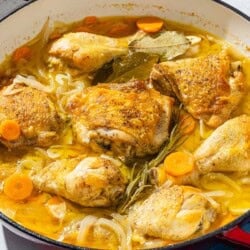
Ingredients
- 2 pounds bone-in, skin-on chicken thighs and drumsticks
- Kosher salt
- Black pepper
- 1 cup Extra virgin olive oil
- 1 Spanish or yellow onion, sliced
- 3 carrots, sliced into 1/4-inch rounds
- 4 garlic cloves, thinly sliced
- 1 cup white wine vinegar or apple cider vinegar
- 1 cup dry white wine or chicken stock
- 1 teaspoon sugar
- 1 sprig sprig fresh rosemary
- 2 bay leaves
Instructions
- Season and brown the chicken. Season the chicken all over with salt and pepper. Heat about 1/4 cup of the olive oil in a large skillet over medium-high heat. Brown the chicken on both sides, about 3 to 4 minutes per side. The chicken does not need to be fully cooked at this point. Transfer to a plate.
- Cook the vegetables. Reduce the heat to medium. Add about 3/4 cup more olive oil, onions, and carrots. Cook, stirring occasionally, until the onions are translucent, about 8 minutes. Add the garlic and cook until fragrant, about 1 minute.
- Braise the chicken. Add the vinegar, wine or stock, and sugar. Use a wooden spoon to loosen any browned bits stuck to the bottom of the pan, incorporating them into the liquid. Return the chicken to the pan along with any juices on the plate. Add a sprig of fresh rosemary and 2 bay leaves.
- Finish cooking: Bring the sauce to a boil, then reduce the heat to low to maintain a gentle simmer. Cook, covered with the lid slightly ajar, until the chicken is tender, 30 to 35 minutes. Chicken thighs and drumsticks are cooked through and the most tender when the internal temperature registers between 190°F and 195°F on an instant-read thermometer.
- Serve or chill overnight. Serve right away, or to let it marinate overnight, cool the escabeche to room temperature. You can accelerate the process by placing the pan in a larger tray of ice water. Transfer it to an airtight container, ensuring the chicken is submerged in the sauce. Store in the refrigerator overnight. Serve cold or hot.
Notes
- Shop this recipe: Visit our shop to browse quality Mediterranean ingredients including the olive oil used in this recipe.
- Note: The escabeche sauce may gel in the fridge. You can warm it on the stovetop or in the microwave to make it liquid again.
- Use boneless, skinless chicken. You can use this escabeche method to cook any cut of chicken by varying the cooking time. If using boneless chicken thighs or breasts, start checking for doneness after 15 minutes. Chicken breast should register 165°F on an instant-read thermometer.
- Instead of wine, try it with dry hard cider. In northern Spain, they often cook with hard cider instead of wine. Substitute apple cider vinegar for the white wine vinegar and a dry hard cider for the wine.
- Add Spanish paprika. To add sweet smokiness, add a teaspoon of smoked Spanish paprika at the same time as the garlic.
Nutrition
Bundle and Save!
Four of our best-selling signature olive oils, perfect for everyday use.
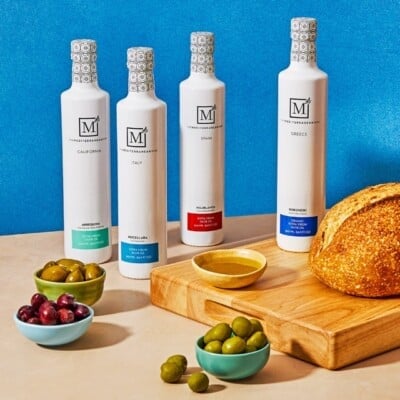
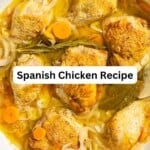

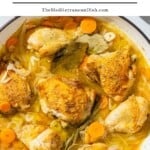
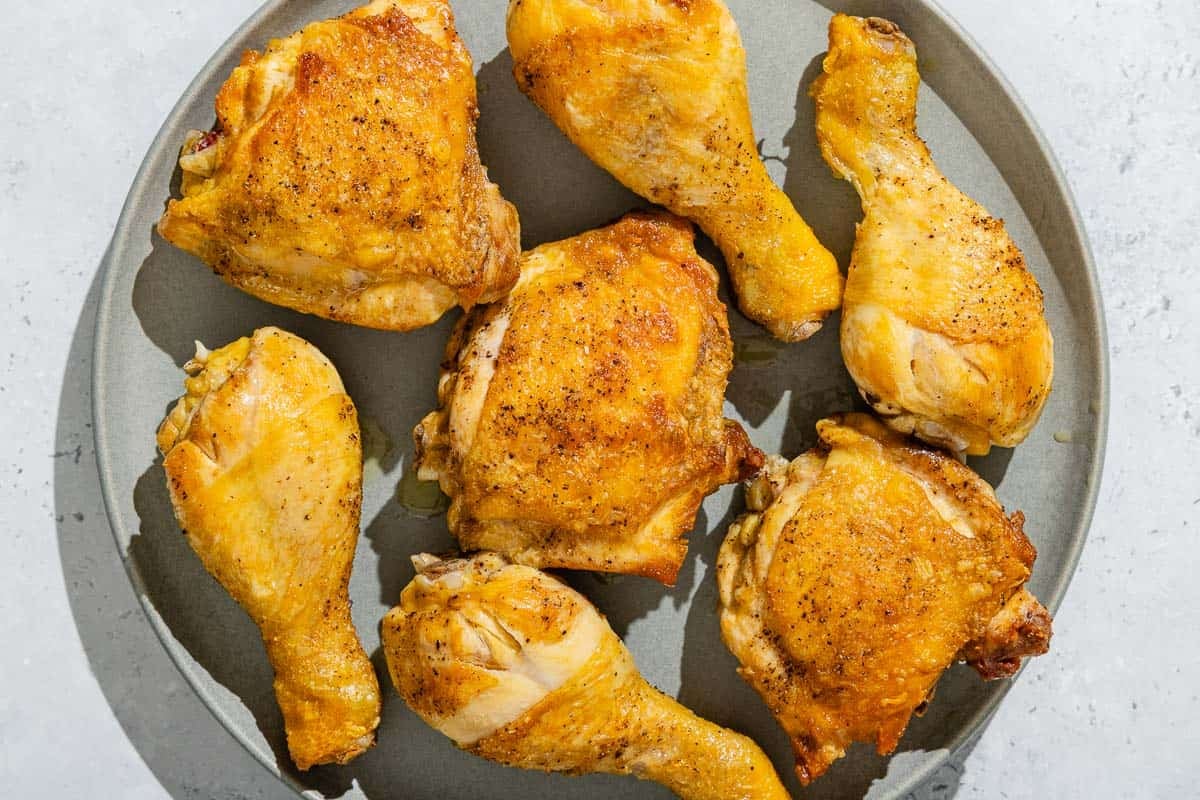
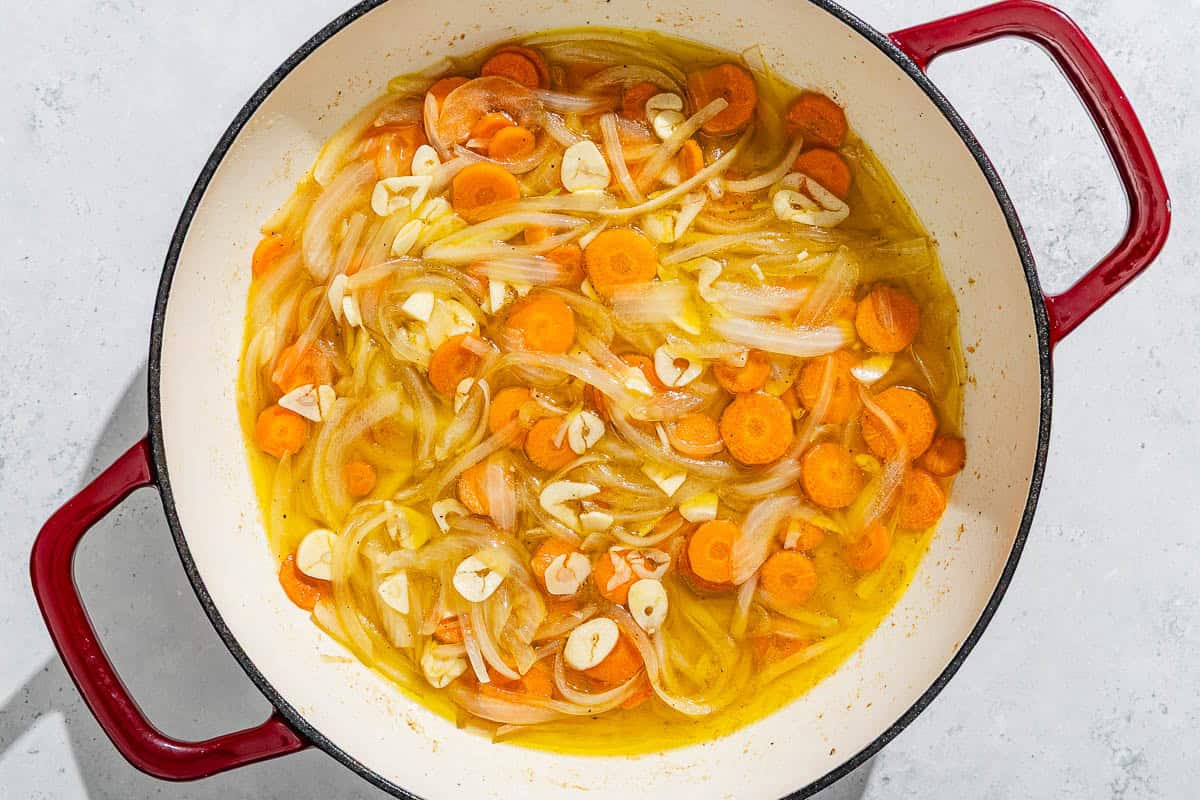
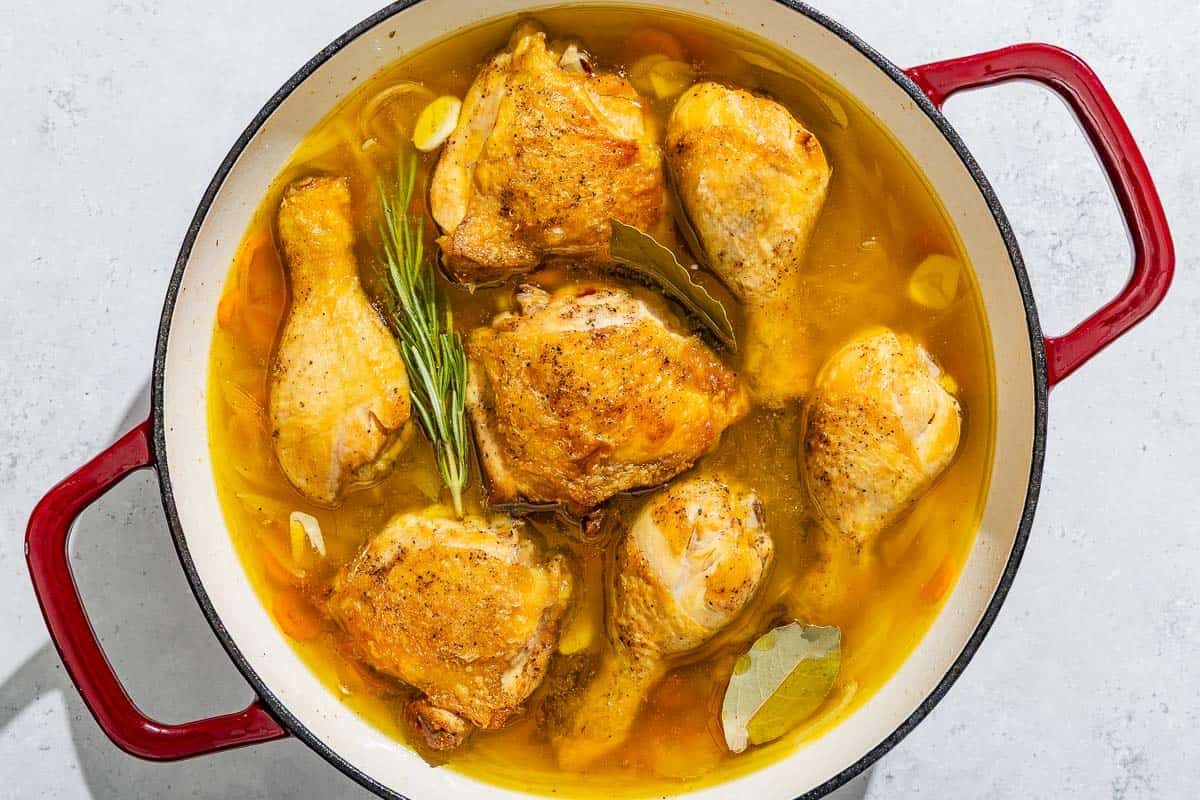
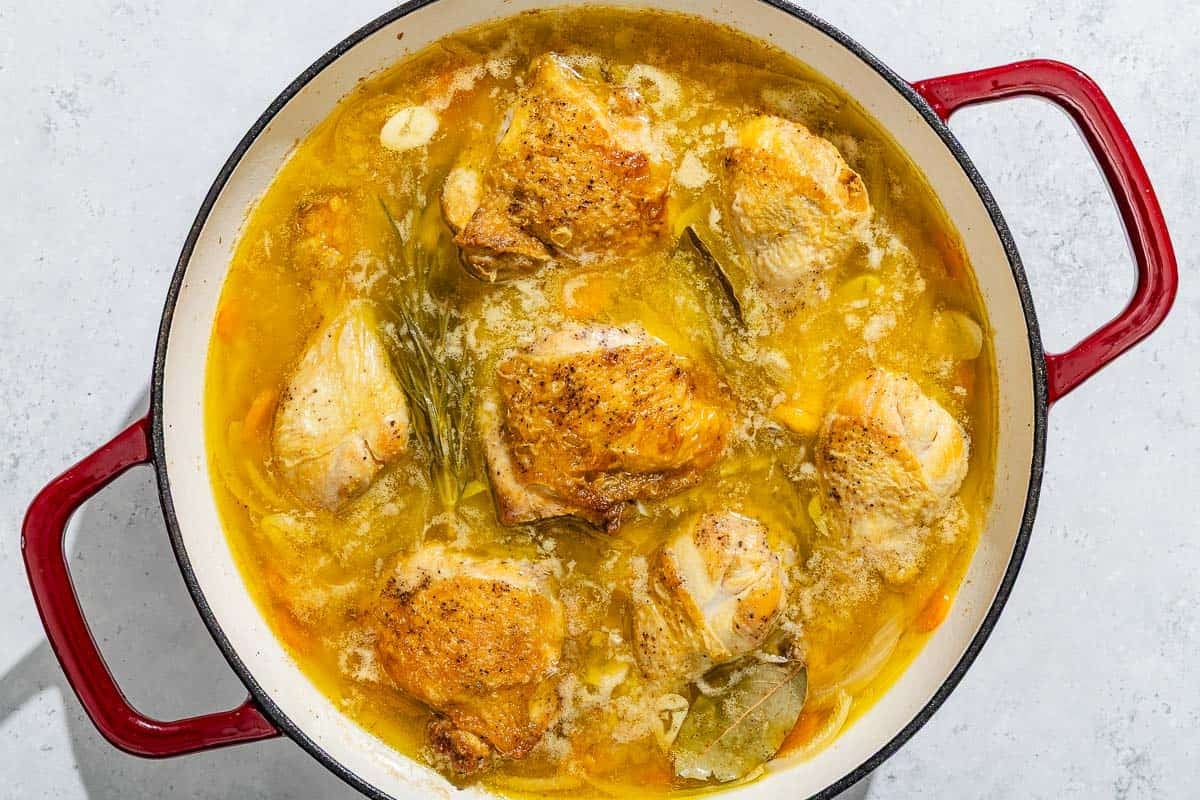
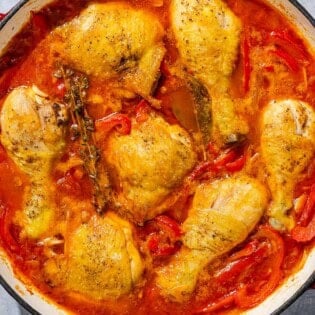
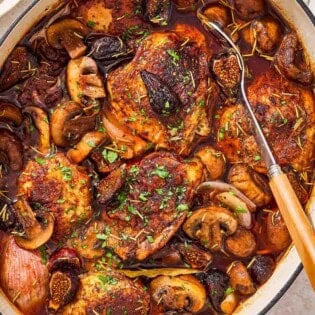
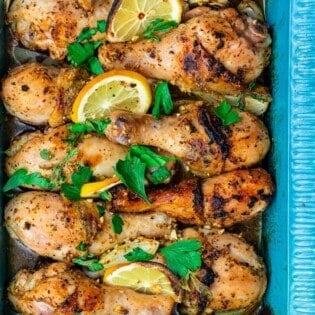
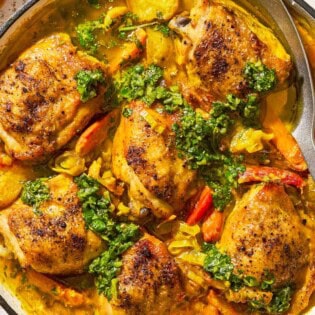
Sorry but this is one if the first recipes on this site that was not great. It was basically stewed chicken with vinegar. Needs some interesting spice combination.
I love all if the other recipes I’ve made.
Just reading the recipe, it looks really good, but I question 3/4 cup of olive oil for the carrots and onions. Is that correct?
Hi, Susan. Yes, that measurement is correct.
Can honey or maple syrup be used to substitute the sugar?
Hi, Dough. We have never tested either of those substitutes, but technically you can. It just may alter the flavor of the dish slightly.
This recipe is excellent. I made it with chicken breasts and love the flavors.
Thanks so much, Sue!
Hey I haven’t made this yet, but to confirm, do we really add 3/4 cup of olive oil to the carrots and onions?
I agree Dan. I’ve been cooking for over 50 yrs and 3/4 c of oil isn’t necessary to produce the results we need. I used a touch over 1/4 c and it worked very well.